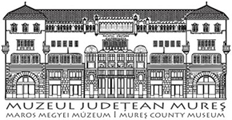Marisia - Maros Megyei Múzeum Évkönyve 29-30/2. (2010)
Short communications
Angela SÄPLÄCAN Materials: minerals and rocks exhibited in the museum, or pertaining to the Museum’s collection; samples, polished plaques and objects from the Museum’s decorative stone collection; rock classifiers, encyclopedias, and specialty books. Procedures: explanation of activities; engaging the children in free dialogue; establishing hypothesis and verifying them with the children; directed investigation; team work and job delegation; discussions. Activity description Preschool children and children grades I-IV will be initiated in the knowledge of decorative stones in 3 stages. • They will get to know magmatic rocks, sedimentary rocks, and metamorphic rocks from the Museum’s systematic basic exhibit. They will learn about the history of stone utilization from the beginnings until present times. The notion of rock and the classification criterion of rocks will be discussed. They will be introduced to the main 3 groups of rocks. The children will learn about the concept of decorative stones and they will see and touch samples of polished and unpolished stones, from the museum collection. • The activities will be structured differently based on the children developmental age and capacity of understanding. At preschool age children the activities will focus more on the interactive aspect, the children getting to touch and handle the materials. The scientific terms will be explained more generalized. The main part of the activity will be having direct contact with each rock and discussing about it, by observing, size, structure, color and other physical characteristics. The children will experiment sensorial (tactile and visual) each polished and non polisher stone. • In the second stage the children asked to identify in the city some of the rocks presented during the activities and take photographs. This stage can be done individually, with the help of a teacher, parent, or as a secondary activity with museum staff. After the materials have been identified, the group will meet at the Natural Science Museum where the findings will be discussed. A PowerPoint presentation with the photography taken by children will be presented, or an exhibit will present the children’s photography (exhibit that can be afterwards transferred at the school or child care that the group belongs to). On a relative small areal in the down town part of the city many of the decorative stones presented in the activity can be encountered: travertine, marble, polychrome limestone, granite, andesite, aragonite (in the Theatre Plaza, Roses Plaza, Culture Palace etc.). • Final stage will be a field trip to the mountains. The trip will take place in the Toplita-Deda pass, at Lunca-Bradului. We will identify volcanic rocks, and on Valea Ilvei we will look for opalized wood, jasper and other decorative stones partially polished by water. Learning Objectives The proposed activity is part of the educational project “Geology for kids”. The project is focused in creating and maintaining skills that will allow children to: 180
